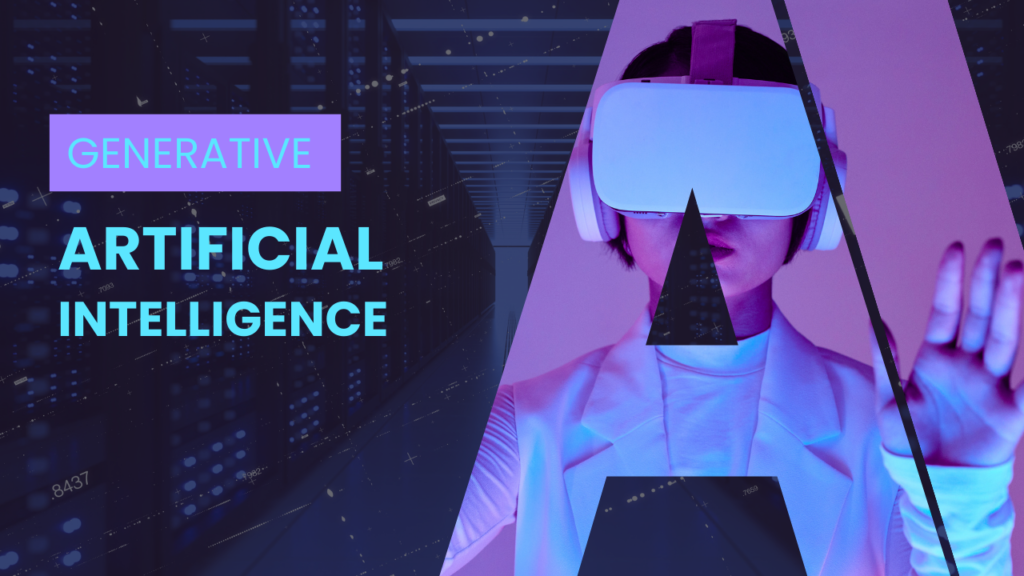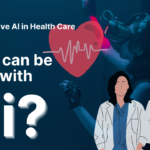In the ever-evolving landscape of artificial intelligence, one aspect that continues to captivate the imagination of researchers, developers, and enthusiasts alike is Generative AI. This revolutionary technology holds the promise of not just mimicking human creativity but also enhancing it through the power of machine intelligence. In this blog post, we’ll delve into the depths of Generative AI, exploring its definition, introduction, and diverse applications across various fields, including healthcare and business.
What is Generative AI?
Generative AI refers to a subset of artificial intelligence techniques that involve using machine learning models to generate new content, often indistinguishable from human-created content. Unlike traditional AI models that focus on recognizing patterns or making predictions based on existing data, This is capable of creating entirely new data, such as images, texts, or even music, based on the patterns it has learned.
This operates on the principle of learning patterns and structures from vast datasets, enabling machines to understand and replicate the underlying characteristics of the data. This process typically involves training sophisticated neural network models, such as Generative Adversarial Networks (GANs) or Variational Autoencoders (VAEs), on large collections of images, texts, or other types of data.

The Impact of Generative AI
Generative artificial intelligence has a profound impact across various industries and domains. In the field of art and creativity, Generative AI tools are revolutionizing the way artists and designers work. They can assist in generating digital artwork, composing music, and even writing poetry, providing endless inspiration and possibilities.
In addition to art, It also finds applications in fields such as healthcare, finance, and entertainment. For example, in healthcare, Generative artificial intelligence algorithms can assist in medical imaging, drug discovery, and personalized treatment planning, leading to more accurate diagnoses and improved patient outcomes.
Generative AI in Action
AI finds applications across a myriad of fields, from art and entertainment to healthcare and beyond. In the realm of art and It enables the creation of stunning visual artworks, poetry, and music, blurring the lines between human and machine creativity. In healthcare, this new technology aids in medical imaging, drug discovery, and personalized treatment planning, revolutionizing patient care and diagnosis.
One of the most remarkable aspects is its ability to learn and adapt from the data it encounters, continually refining its outputs to better align with human preferences and expectations. This dynamic learning process allows to evolve over time, producing increasingly sophisticated and realistic outputs that challenge our notions of creativity and intelligence.
Introduction to Generative AI
Generative AI operates on the principles of neural networks, particularly generative models like Generative Adversarial Networks (GANs) and Variational Autoencoders (VAEs). These models are trained on vast datasets and learn to generate new content by understanding the underlying patterns and structures present in the data. The process involves iterative refinement, where the model generates output, receives feedback, and adjusts its parameters accordingly to improve the quality of its creations.
Applications of Generative AI
One of the most remarkable aspects of Generative AI is its ability to learn and adapt from the data it encounters, continually refining its outputs to better align with human preferences and expectations. This dynamic learning process allows it to evolve over time, producing increasingly sophisticated and realistic outputs that challenge our notions of creativity and intelligence.
These diverse applications showcase the versatility and transformative potential of Generative AI across multiple domains, from creative endeavors to practical problem-solving in business and beyond. As the technology continues to evolve, its impact on society and the economy is poised to grow exponentially, shaping the future of human-machine collaboration and innovation. Here We will discuss on the eight applications of generative AI.
1. Creative Content Generation
AI has unlocked new avenues for creative expression, enabling artists, writers, and musicians to explore novel ideas and styles. From generating realistic images and videos to composing original music and poetry, AI tools empower creators to push the boundaries of their imagination.
2. Virtual Reality and Gaming
In the realm of virtual reality (VR) and gaming, Generative AI plays a crucial role in creating immersive experiences. By dynamically generating environments, characters, and narratives, AI-driven systems can adapt to user interactions in real-time, offering personalized and engaging gameplay experiences.
3. Data Augmentation and Synthesis
Generative AI techniques are widely used in data augmentation and synthesis, especially in domains where labeled data is scarce or expensive to obtain. By generating synthetic data that closely resembles real-world samples, AI models can be trained more effectively, leading to improved performance in tasks such as image recognition, natural language processing, and medical diagnosis.
4. Natural Language Processing
Generative AI powers advancements in natural language processing (NLP), enabling systems to generate human-like text and conversation. From chatbots and virtual assistants to language translation and content generation, AI-driven NLP models facilitate communication and interaction in various languages and contexts.
5. Image and Video Editing
In the realm of multimedia production, AI simplifies and enhances image and video editing workflows. AI-powered tools can automatically generate realistic visual effects, retouch photos, and even synthesize entirely new images based on user input, speeding up the creative process for filmmakers, photographers, and designers.
6. Fashion and Design
Generative AI revolutionizes the fashion and design industries by assisting in garment design, pattern generation, and style recommendation. By analyzing trends and user preferences, AI models can generate fashion sketches, textile patterns, and personalized styling suggestions, catering to individual tastes and preferences.
7. Financial Modeling and Forecasting
In finance and economics, Generative AI aids in modeling complex financial systems and predicting market trends. AI-driven models can generate synthetic financial data, simulate market scenarios, and forecast future outcomes, providing valuable insights for investment decisions, risk management, and economic policy formulation.
8. Content Creation and Curation
Generative AI algorithms automate content creation and curation tasks across various media platforms, including social media, news, and entertainment. By analyzing user preferences and engagement patterns, AI systems can generate personalized content recommendations, curate news articles, and even create original stories and articles tailored to specific audiences.
Challenges and Ethical Considerations
While generative AI holds immense potential, it also presents challenges and ethical considerations. One concern is the potential misuse of generated content, such as deepfake videos or fake news articles. Ensuring the responsible use of this technologies is crucial to prevent misinformation and manipulation.
Furthermore, there are concerns about bias and fairness in ai systems. If trained on biased datasets, these systems may perpetuate and amplify existing societal biases. Addressing these issues requires careful consideration and responsible development practices to ensure that this technology benefits society as a whole.
In conclusion, Generative AI represents a groundbreaking convergence of human creativity and machine intelligence, offering endless possibilities across various domains. From unleashing creative expression to transforming industries like healthcare and business, the impact of this technology continues to shape the future of technology and society as a whole. Embracing this transformative technology opens new horizons of innovation and discovery, paving the way for a more intelligent and creative world powered by AI.


